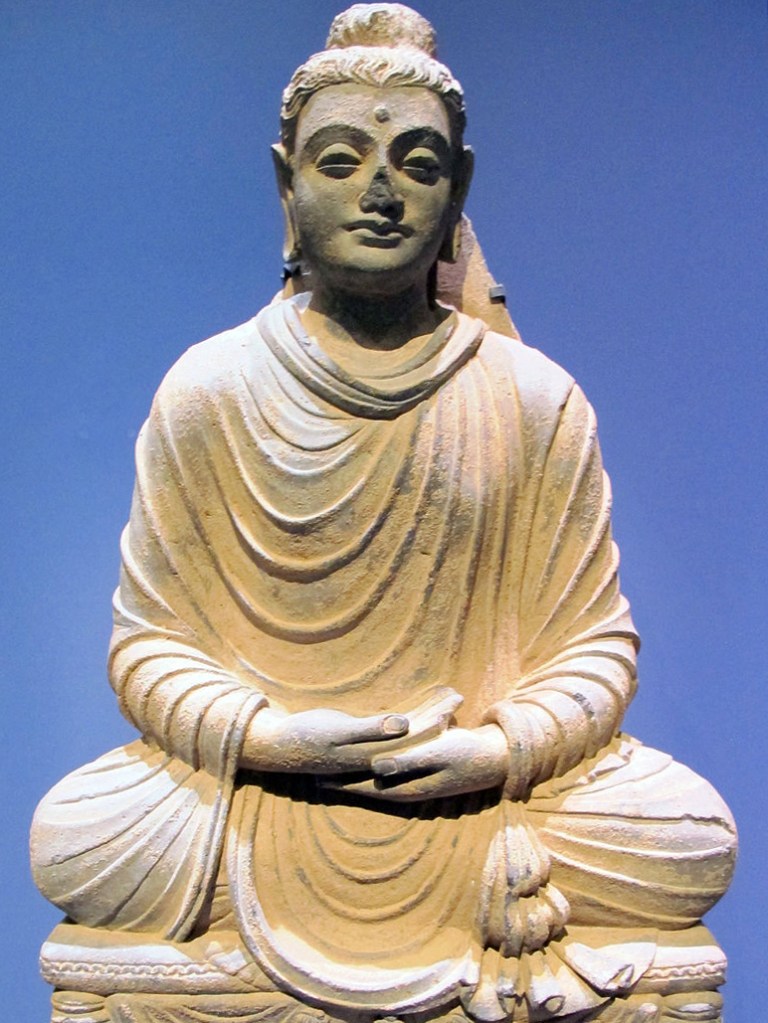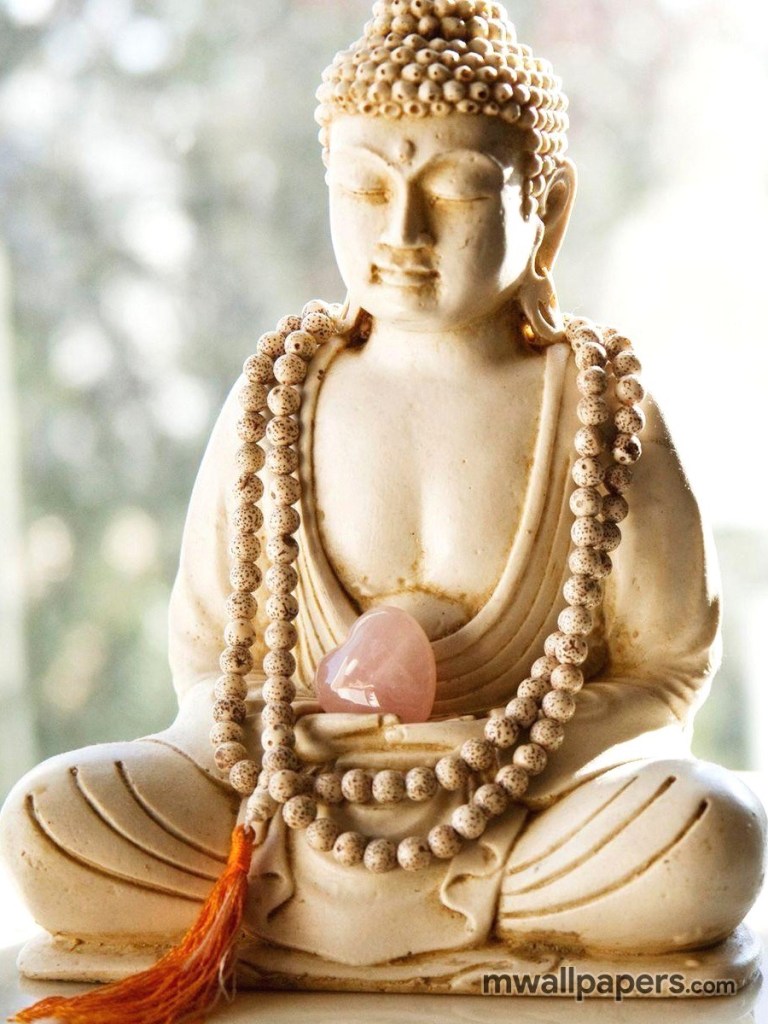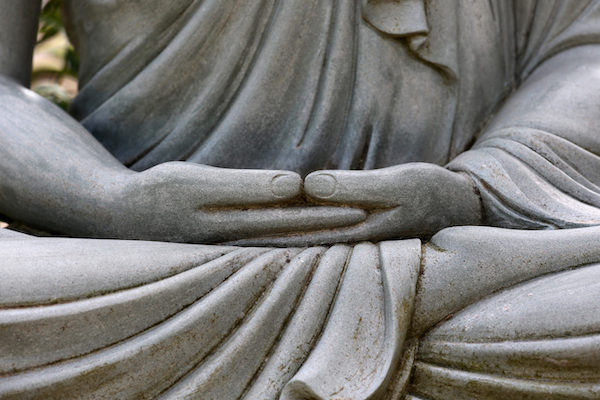POSTCARD#467: When the nimitta is stable and radiant, then one is at the entrance to jhāna. One must train oneself to wait patiently here, maintaining the stillness and non-doing until the causes or conditions are ready for the transition into jhāna. At this stage, however, some meditators make the mistake of disturbing the process by peeking at the edge of the nimitta.
Once the nimitta is stable and bright, one might become interested in its shape or size. Is it circular or oblong? Are the edges precise or ill-defined?
Is it small or is it big? When one looks at the edge, mindfulness loses its one-pointedness. The edge is the place of duality, of inside and outside. And duality is the opposite of one-pointedness. If one looks at the edge, the nimitta will become unsettled and may even disappear. One should keep mindfulness on the very center of the nimitta, away from the edge, until any perception of edge vanishes into the nonduality of one-pointedness.
Similarly, if one attempts to expand or contract the nimitta, then one will also be sacrificing the essential one-pointedness. Expansion and contraction involve the perception of size, and that involves awareness of the edge of the nimitta and the space that lies beyond. Again one is falling back into the trap of duality and loss of one-pointedness through this unprofitable expanding and contracting.
So when the nimitta is stable and bright, you must be patient. Don’t move. One is building up the jhāna factors of pīti-sukha and one-pointedness. When they are built to sufficient power, they will unfold into jhāna by themselves. An oft-quoted passage from the suttas, often erroneously translated to imply the existence of an original mind, is relevant here. The passage is from the Aṅguttara Nikāya 8.
This mind, O monks, is luminous, but it is defiled by adventitious defilements. The uninstructed worldling does not understand this as it really is; therefore for him there is no mental development.
This mind, O monks, is luminous, and it is freed from adventitious defilements. The instructed noble disciple understands this as it really is; therefore for him there is mental development. (AN I,6,1-2)
At the stage of the beautiful and stable nimitta, it is the nimitta that is radiant and incredibly luminous. And the nimitta, as already explained, is an image of the mind. When one experiences such a nimitta, one recognizes it as the luminous (or radiant) mind of the Aṅguttara passage above. This nimitta is radiant because the mind has been freed from the “adventitious defilements,” which mean the five hindrances. Then one understands that this nimitta—this luminous mind freed of the five hindrances—is the doorway into jhāna, then one truly understands what is meant by “mental development.”
When the nimitta is radiant and stable, then its energy builds up moment by moment. It is like adding peace upon peace upon peace, until the peace becomes huge! As the peace becomes huge, the pītisukha becomes huge, and the nimitta grows in luminosity. If one can maintain the one- pointedness here by keeping one’s focus on the very center of the nimitta, the power will reach a critical level. One will feel as if the knower is being drawn into the nimitta, that one is falling into the most glorious bliss. Alternatively, one may feel that the nimitta approaches until it envelops the knower, swallowing one up in cosmic ecstasy. One is entering jhāna.
Yo-Yo Jhāna
It sometimes happens that when inexperienced meditators fall into a nimitta, they immediately bounce back to where they began. I call this a “yo-yo jhāna,” after the children’s toy. It isn’t a real jhāna because it doesn’t last long enough, but it is so close. It is the enemy I identified above, excitement, that causes mindfulness to bounce back from jhāna. Such a reaction is quite understandable since the bliss that one experiences when falling into the nimitta is greater joy than one can ever imagine. One may have thought that the best sexual orgasm was something nice, but now one discovers that it is trivial compared to the bliss of these jhānas. Even after a yo-yo jhāna, one often bursts into tears of happiness, crying at the most wonderful experience by far of one’s whole life. So it is understandable that novice meditators first experience yo-yo jhānas. After all, it takes a lot of training to be able to handle such immensely strong bliss. And it takes a lot of wisdom to let go of excitement when one of the great prizes of spiritual life is theirs for the taking.
For those who are old enough to remember the game of snakes and ladders, the simple children’s board game played with dice, they will remember the most dangerous square to land on is the square just before the goal. The ninety-ninth square holds the head of the longest of snakes. If you land on the hundredth square you win. But if you land on the ninety-ninth square, you fall down the snake to its tail, right back at the beginning. A yo-yo jhāna is like landing on the ninety-ninth square. You are very close to winning the game and entering a jhāna, but you fall just a little short, land on the snake head of excitement, and slide, or rather bounce, right back to the start.
Even so, yo-yo jhānas are so close to the real thing that they are not to be sneered at. In the yo-yo jhāna one experiences incredible bliss and transports of joy. It makes one feel as high as a weather balloon for hours, without a care in the world and with so much energy that one can hardly sleep. The experience is the greatest in one’s life. It will change you. Through a little more training and wise reflection on one’s experiences, you will be able to fall into the nimitta, or be enveloped by it, without bouncing out. Then you have entered the amazing world of jhāna.
Continued next week: April 22, 2022
Image details:
810px-Gandhara,_periodo_kushan,_buddha_in_meditazione,_I-IV_sec.JPG
Refers to the Buddhist culture of ancient Gandhāra which was a major center of Buddhism in the Indian subcontinent from the 3rd century BCE to approximately 1200 CE. Ancient Gandhāra corresponds to modern day north Pakistan, mainly the Peshawar valley and Potohar plateau as well as Afghanistan’s Jalalabad.









You must be logged in to post a comment.